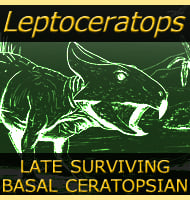In Depth
An extinct genus of lobe-finned fish, Mandageria was a streamlined predators of other fish. With the exception of the pectoral fins that are situated near the head, all of the other fins are located in more posterior locations towards the tail. Because these fins were here, they could help increase the surface area that pushed against the water as the tail moved, making Mandageria (and similar fish) capable of sudden bursts of acceleration towards prey, closing the distance between them before the prey could even react. The long ‘torpedo-shaped’ body of Mandageria is quite common amongst fish today, particularly fresh water genera that lurk amongst reeds while waiting to ambush prey. Once prey was in the mouth, the sharp teeth made certain that prey could not get away. The type species name M. fairfaxi is in honour of James Fairfax.
At up to two meters long, Mandageria was fairly large for a lobe-finned fish, yet it was nothing near the size of Hyneria, another genus of lobe-finned fish which is considered to have been quite closely related to Mandageria.
Further Reading
A new tristichopterid (Osteolepiformes: Sarcopterygii) from the Mandagery Sandstone (Late Devonian, Famennian) near Canowindra, NSW, Australia - Z. Johanson & P. E. Ahlberg - 1997.











